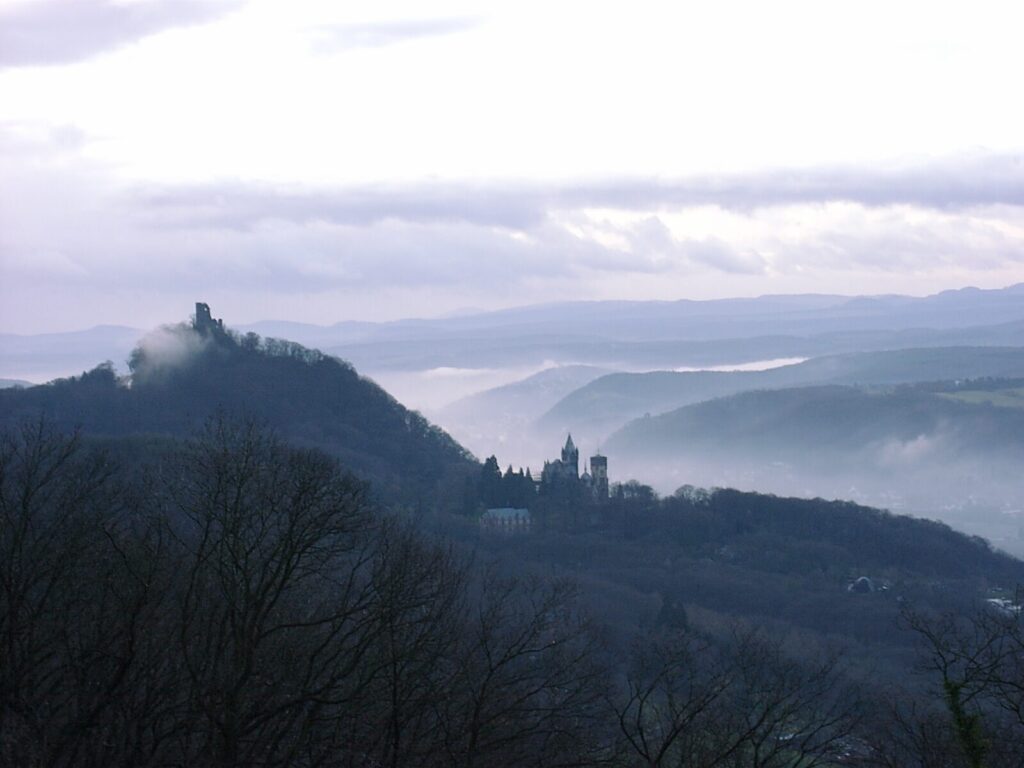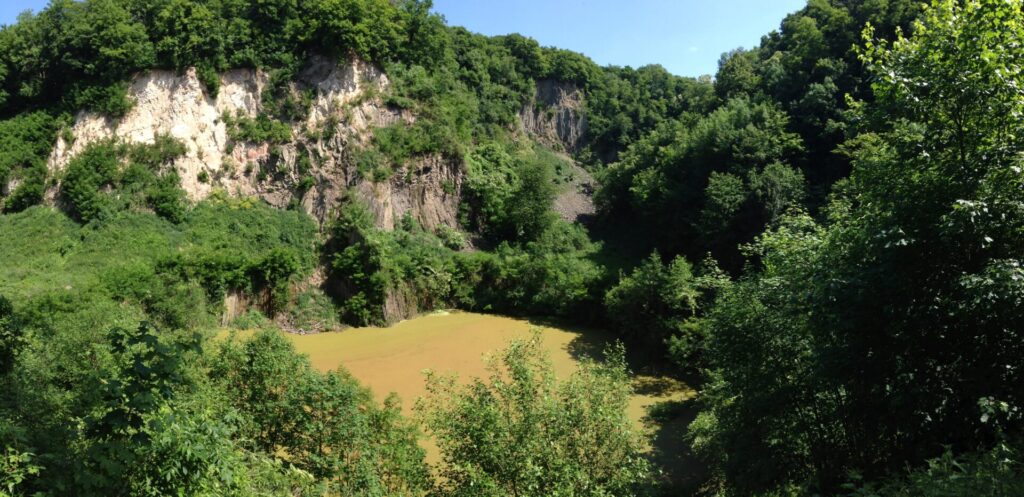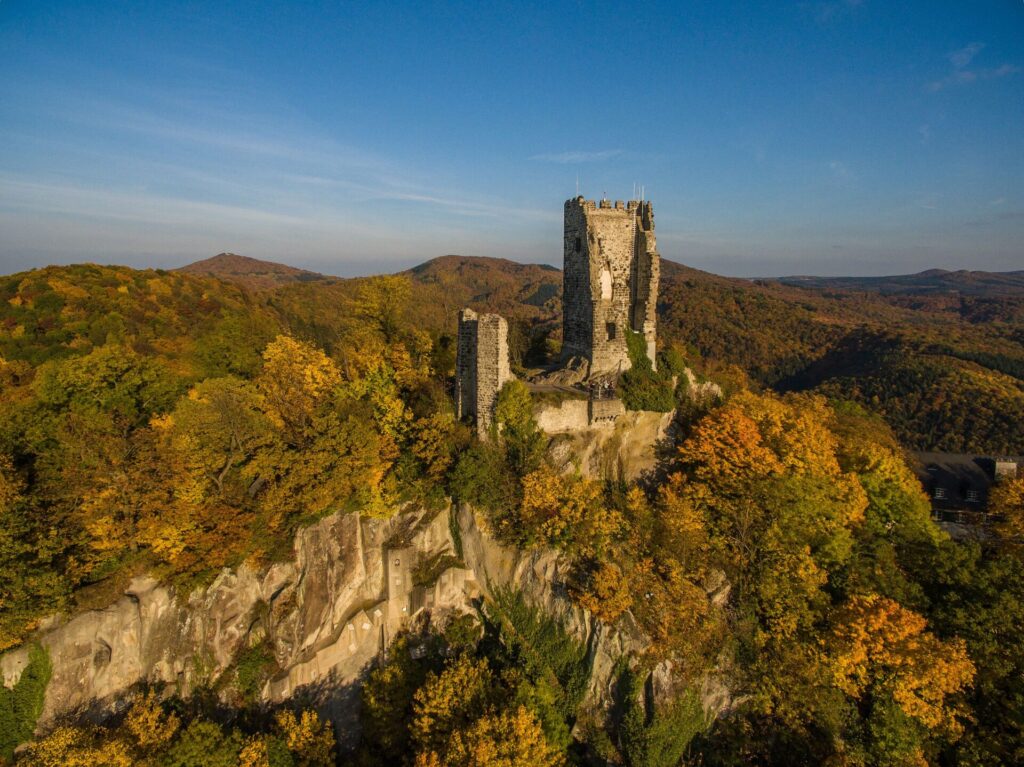Where do the stones for building an abbey church come from? On this geological hike, we learn where the monks of the Cistercian monastery in Heisterbach obtained their building materials and how they were formed in geological terms. Exciting!
Quartz latite, a volcanic rock from the Tertiary period, was mined in the former quarry on the Stenzelberg. The quartz latite is part of the now largely eroded Siebengebirge volcano, which was formed in the late Oligocene. The quartz latite consists mainly of feldspar, quartz and conspicuous black speckles of hornblende up to several centimetres in size. These are crystals that were precipitated in a deep magma chamber during the slow cooling of the molten mass and were then carried away with it as it rose. Most of the quartz latite did not flow out at the surface, but probably solidified shortly below the surface to form a roughly circular source dome within the older trachyte tuff that was not exposed in the quarry. At the NW corner of the quarry, near a free-standing, adventurously shaped rock tower (called “Campanile Basso” by earlier climbers), there is bubbly, foamed latite that has emerged at the surface and is interpreted as a flank eruption of the Siebengebirgs volcano (Oertel, 1953).




